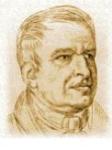In 2015 Technische Universität Dortmund launched the series Dortmunder Schriften zur Musikpädagogik und Musikwissenschaft with Ludwig Uhland und seine Komponisten: Zum Verhältnis von Musik und Politik in Werken von Conradin Kreutzer, Friedrich Silcher, Carl Loewe und Robert Schumann by Burkhard Sauerwald.
The large number of settings of his poems is one indication of the significance of the poet, politician, and scholar Ludwig Uhland (1787–1862) in 19th-century intellectual history.
The composers employed a variety of compositional strategies to convey the linguistic characteristics of Uhland’s poetry, such as their folk-like vocabulary and design. A detailed excursus of the Uhland–Silcher song Der gute Kamerad provides a representative example of the history of the political reception of Uhland settings.
Below, Richard Tauber sings Der gute Kamerad.












